2025 Wisconsin Agricultural Outlook Forum
Dairy Situation and Outlook
Summary
Leonard Polzin, dairy economist and farm management outreach specialist for the UW-Madison Division of Extension, discusses the current state of the dairy market, focusing on the influences of processing capacity, beef prices, policy implications, and production costs. Polzin highlights the evolving dynamics between supply and demand within the dairy industry, particularly as new processing facilities come online and as beef prices affect revenue streams for dairy farmers.
Polzin emphasizes the cyclical nature of the dairy market and the variability in profit margins across different farms. There is a notable increase in milk solids production despite a decrease in total milk output, attributed to improved efficiencies and genetic advancements in dairy cattle.
The presentation also covers pricing dynamics between different dairy products, the implications of export trends, and projections for the dairy margin coverage program.
Highlights
New Processing Capacity: Anticipated increase in milk demand due to new processing facilities coming online in February.
Higher Beef Prices: Increased beef prices are contributing to higher revenue streams for dairy farmers through terminally bred animals.
Policy Risks: Uncertainties surrounding tariffs, food assistance programs, and labor availability could negatively impact dairy prices.
Milk Price Adjustments: A projected decrease of 30 cents per hundredweight in all milk prices due to changes at the producer level.
Production Efficiency: Enhanced production efficiency resulting in higher solid component production despite fewer cows in the dairy herd.
Product Pricing Dynamics: The contrasting pricing trends between cheese and butter, highlighting consumer acceptance of higher butter prices.
Exports and Competitiveness: The significance of exports and the need for U.S. milk prices to remain competitive on the global market.
Insights
Increased Processing Capacity Drives Demand: The dairy industry is set to see a substantial increase in processing capacity, estimated at around 8 billion in gross capacity. This surge is expected to create a higher demand for milk, particularly as new plants come online around February. The implications of this growth are significant, as it could lead to a more stable and profitable market for dairy farmers, provided they can meet the increasing demand for fluid milk.
Impact of Beef Prices on Dairy Revenue: The rising prices of beef are creating positive ripple effects throughout the dairy sector, particularly for farmers involved in terminally bred animals. Higher beef prices can lead to increased revenues for dairy farms, which may help offset some of the increased costs associated with dairy production. This interplay between beef and dairy prices showcases the interconnectedness of agricultural markets and how fluctuations in one commodity can affect another.
Downside Risks from Policy Changes: The potential for policy changes, including tariffs and adjustments to food assistance programs, poses a significant downside risk for the dairy market. The uncertainty surrounding labor availability further complicates matters, as any disruptions could lead to dramatic effects on the entire dairy supply chain. These factors underline the importance of monitoring political developments as they can heavily influence market dynamics.
Variability in Dairy Margins: The speaker emphasizes the variability in dairy farm income and feed costs, highlighting that year-over-year swings can reach as high as $10 per hundredweight between farms. This variability calls for a nuanced understanding of market conditions, as what may appear to be a good year for the dairy sector might not be the case for every farmer. It highlights the need for tailored strategies that consider individual farm circumstances.
Increasing Solid Production Efficiency: Despite a decrease in total milk production by 0.2%, the dairy industry has experienced a 1.35% increase in solid production. This trend illustrates the ongoing improvements in milk composition, where processors are more concerned with solids than total volume. This efficiency could suggest that dairy farming is becoming more sustainable, as producers are achieving higher yields with fewer cows, leading to reduced environmental impact.
Differentiated Pricing Trends: The pricing dynamics between cheese and butter reveal interesting consumer behavior. While cheese prices remain relatively stable, butter has found a new pricing range that consumers are willing to accept. This divergence reflects the varying demand elasticity for different dairy products, indicating that producers may need to strategize their production and marketing efforts based on product-specific trends.
Importance of Exports in Pricing: The U.S. dairy market is heavily influenced by international competitiveness, with approximately 16% of milk solids currently being exported. A historical perspective shows that good years for dairy often coincide with either reduced production or increased exports. As the industry looks towards the future, maintaining competitive pricing on the world stage will be crucial for sustaining strong margins, particularly in light of logistical challenges faced in international markets.
Transcript
Farm Income
00:01
well thank you very much we're just going to kind of start out with a general overview of where some of the bulls and bears are in the Market at the moment um he's going to switch it over in the back so uh right now when we take a look at Bulls things that are going to carry the market as we take a look at prices more on that farm level which is that new processing capacity that's going to be coming online um as and that's kind of starting about this time February anecdotally is when some of these plants are going to
00:28
be uh demanding some increase milk that will of course increase the demand uh kind of across the US for a lot of milk that needs to go into this processing capacity portion of that as Dr Bell just mentioned is that we are seeing some higher beef prices and that has translated into some increased Revenue uh streams or potential on the farm level as we look at some of those terminally bred animals uh and that's also kind of led to this optimization in uh herd and replacement inventories so when we take a look at
01:01
some of our bull factors as you can tell that bull factors are kind of out outnumbering those bull the uh potential price increases that we see at the moment so the biggest of which which is very relevant today is that it seems like we have a lot of policy things that could uh D price and I think a lot of our downside risk is actually kind of baked into those unknowns more so uh than I would say the unknown on the upside at the moment so uh with that those policy things are of course the tariffs um that
01:33
are being uh discussed tossed around right now adjustments to any of our food assistance programs these benefit things um and then also labor if there is any policy that affects the availability of Labor um either on the the producer side but through the entire um you know Dairy supply chain uh could have some pretty dramatic effects So Married with that new processing capacity that demand for milk is also at some should see more product arrive um at the wholesale retail level uh for dairy products the
02:05
big question right now is how much of that is already baked into the prices that we're seeing versus how much of it uh will need to have some price adjustment in order to clear product as we go forward um we doy on the farm level in production milk production as uh in terms of components fat and protein right uh so that may have some offsetting effect as uh uh we may that solid Demand on that processor side maybe a bit more quickly than what we anticipate uh and of course Federal milk marketing orders have a discussion
02:40
um and rightfully so here so I'll kind of group that into the policy category as well um and there are some uh Geographic differences there class differences but uh big takeaway is that uh we do expect about a 30 Cent per 100 weight decrease in our all milk price um from uh that that change on the producer level so as we kind of take a look at where we're coming from I think it sets a stage nicely of where we're headed 20123 we had some of these record low margins so margin is we're measuring as
03:12
income over feed cost so as we came out of 2023 and into 2024 kind of swung and we have a kind of a nice uh snapshot of this microcosm of uh the cyclical nature of these Dairy markets 2024 we've seen very good margins on that producer level uh as Paul mentioned earlier we do see incredible variation on that farm level of what margin actually means so the re um out of Campus here is year-over-year we'll see a $10 swing in cost of production per 100 weight uh between Farms On Any Given year so keep that in
03:49
mind as we go along it's easy to generalize and say hey 2024 good year right but again as Paul mentioned there's incredible variability within that so again as we talk about our component production it's just amazing that every single year fat and protein uh we keep increasing over time uh the joke on this is how long it will be before instead of uh milking the cow and getting milk how long will it be before we get yogurt um so I think as we keep going uh it seems like we have not genetic potential of the dairy cow uh
04:21
and I think that these numbers will just keep increasing as we go along so what does that mean it means that last year we saw a . 2% decrease in total milk production right now if we look at just the solid component of that 1.35% increase in solids right so while our production was down solids were up when you're a processor what what means the most to you 100 weights or solids solids right so I think that's very interesting and somewhat telling as we kind of go along through uh these you know years of increased efficiency on
05:01
that cow side of things uh also what's very fascinating with this is we did all of this with a half million fewer cows on average for the year um so I'm I get a lot of questions about this and we kind of just uh spinning off of the beef topic this is uh when we look at dairy cattle and beef you can definitely tell right that we have been terminally breeding more animals um so I think there's a few takeaways in this is that uh one it is an increased Revenue stream and I think producers are realizing that
05:35
um and you know are are very that uh the other portion of that is I think we've optimized some heer inventory um and some replacement inventory and that this does influence that supply of heers as we look for the year ahead um but I uh there is not a lot of evidence that says that that's likely to impact her expansion or uh elk Supply there seems to be enough supply chain coordination enough forward planning um things of this sort that as we demand that more uh more fluid milk um that you know that Supply will uh will be met by
06:12
the producer so and I do think we we will see increase count numbers as we go into 2025 increase Pro processing capacity uh this is uh information put up by ever EG uh and their number was 7 billion I kind of continued that count uh and I stopped at about 8 billion of new processing capacity uh it's important to note that this is gross capacity so some facilities will be closed simply updated some will be new right uh the other portion of this is that it's not like it just turns on all in one day uh so it's kind of this
06:48
continual progression of this in increased processing capacity and then therefore as we go along right increase Supply in the marketplace so often times month Maybe more lag in between uh you know some of these start times the times that we start to see uh some of the impacts in the marketplace so um I think that in you know 2025 in this more short to immediate term um that you know that increased demand is going to make a difference uh is going to work to support those I think there's still a longer term question to be asked of what
07:22
does that mean once we do get more product in the marketplace uh how do we keep clearing uh that product so so on the product side if we take a look at cheese cheese is big in Wisconsin cheese is our what we uh you know is tied to our class three price class three price often will reference that cheese and what's interesting is if you look at the weighted average retail price for cheese uh you know as we get to 2024 we do have some outliers but really that trend line it goes up but it's more or less level
07:54
right uh we've seen some price sensitivities fairly range-bound in that cheese price in aggregate right so if we contrast that to butter price butter has really found a new price range uh that consumers seem willing to accept so butter is that class four price and I think this is a lot to do or a good depiction uh of why that class 4 price as uh kind of on that forward curve uh does seem to still remain strong as we go forward uh and also in relation to that processing capacity we will see less um total
08:30
volume increase on on new butter hitting the market versus the cheese as well so uh one of the things on that especially in Wisconsin that we've seen uh are not only variabilities like I said before in cost of production but also in a pay price right uh and when you take a look at pay price a lot of times that's determined on where they're supplying their milk too cheese butter what have you right so um we've price spread between that class three and class 4 uh during that 2023 and 2024 time period so
09:07
most recently that class three did come above class 4 um but now we've kind of seen that trail off uh and it's at least in my opinion it seems reasonable that we would uh kind of see that class three be at a discount uh for class 4 for some time uh and this the uh Futures kind of depict the exact same thing right so right now we see an average difference between class three and class 4 price is about A1 with some of our WID 50 per 100 weight so um as we kind of translate that into um you know where the market
09:45
is going to go uh you know I think that as we look at all milk price I think that that class three is going to uh kind of pull down or put some pressure on that number um when we take a look at exports if we are having more products in the future um and if generally when you look at good years for dairy good years for dairy generally mean either you have decrease in milk production of you say 1% or less or uh increase in exports right uh and that's what we saw in 2022 is our exports were very good um and
10:17
then when that happened our price well what's happened ever since in the last few years is we have seen this slow trickle down in the percent of exports that we uh that we are having um the good news is historically we're still in uh you know a higher range that's for sure uh but you know as we kind of look towards where we're going to uh you know kind price PR price pressures from the marketplace uh exports certainly have to be a component of that so um just based on that line graph there we see that the
10:49
percent of us milk solids exported is about 16% at the moment um and then kind of ending that discussion around exports if we we really need to be competitive in that World Market um thankfully recently here we've seen um well thankfully on the export side we've seen that uh the US milk price has come uh back in line um with that world price so uh you know honestly if we're we need to see uh that our us price is slightly at a discount just to account for some of the uh additional logistical challenges
11:27
that we Face uh accessing some of these International markets so as we take a look at what 20 2025 is going to mean on that uh producer level when we take a look at this is DMC Dairy margin coverage income over feed cost margin um that orange line is where the current DMC margin is forecasted uh the blue line is what I would utilize as kind of that adjusted forecast if you will um I think that uh right now we're uh not really accounting um some of the uh feed prices um in that forecast as maybe
12:04
accurately as what they seem to be as we go forward um and also I think we're going to have some of these class three pressures come in uh bring down that all milk price so um you know while we were at that $4 per 100 weight margin previously look towards the next year uh we're going to be closer to that $11 income over feed cost Mark so uh right now I would say you know $20 per 100 weight mil seems to be that all mil price seems to be uh kind of that supportive level uh that comes through in that information uh and again price
12:38
pressures half of the year um coming from different uh larger utilization of class 3 milk Federal milk marketing order changes things like this and if there are any policy changes um you know we'll see that come in later in the year as well so um yeah with that you know 2023 not so great 202 the hope is that 2025 uh you know we don't have too many surprises and we can kind of keep uh riding these positive margins through the majority of the rest of the year [Applause]
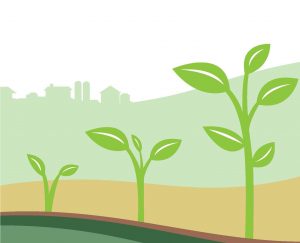
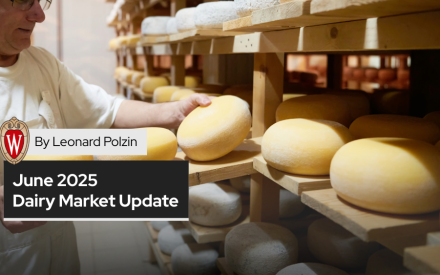 Dairy Market Dynamics and Domestic Constraints: A Dairy Sector Assessment as of June 2025
Dairy Market Dynamics and Domestic Constraints: A Dairy Sector Assessment as of June 2025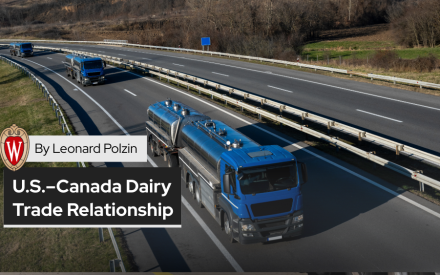 U.S.–Canada Dairy Trade Relationship (2025–Present)
U.S.–Canada Dairy Trade Relationship (2025–Present)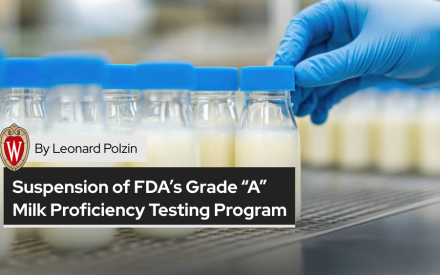 Suspension of FDA’s Grade “A” Milk Proficiency Testing Program – A Comprehensive Analysis
Suspension of FDA’s Grade “A” Milk Proficiency Testing Program – A Comprehensive Analysis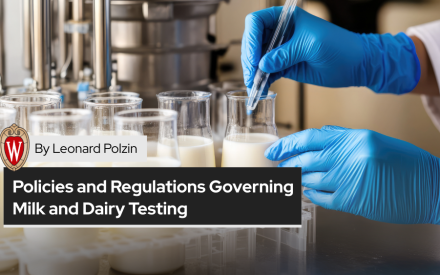 Policies and Regulations Governing Milk and Dairy Testing: A Wisconsin Overview
Policies and Regulations Governing Milk and Dairy Testing: A Wisconsin Overview


